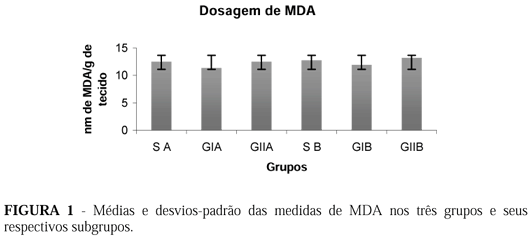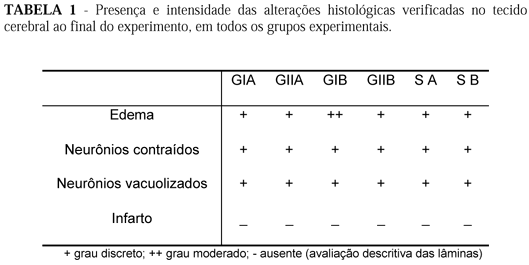PURPOSE: To evaluate reproducibility of two experimental brain ischemia and reperfusion models. METHODS: Sixty rats were randomly distributed to three experimental groups: I - (20) temporary clipping of the left carotid artery; II - (20) cauterization of vertebral arteries and temporary clipping of the left carotid artery; "Sham" - (20) simulation group, with neither ischemia nor reperfusion. All animals had permanent occlusion of right carotid artery and the three groups were subdivided into two reperfusion periods: A - 60 minutes e B - 120 minutes. Parameters verified were: mean systemic arterial blood pressure and carotid blood flow measurement; brain malondialdehyde measurement by TBARS assay and histological evaluation of the brain hemisphere submitted to ischemia and reperfusion. A supplementary brain angiography study was also conducted on 5 additional animals. RESULTS: There was no significant difference in brain malondialdehyde dose and in frequency and severity of histological brain alterations among the three groups. In groups GI and GII, mean arterial blood pressure was significantly higher during the ischemia period. Blood flow in the periods before and after clipping increased in Groups IA and IIB, decreased in Group IB and did not alter in Group IIA. Supplementary study angiographs showed blood supply to brain through collateral circulation. CONCLUSION: The ischemia and reperfusion models studied did not show consistent change in brain injury markers as far as lipoperoxide production and histological damage are concerned.
Brain ischemia and reperfusion; Lipoperoxidation






